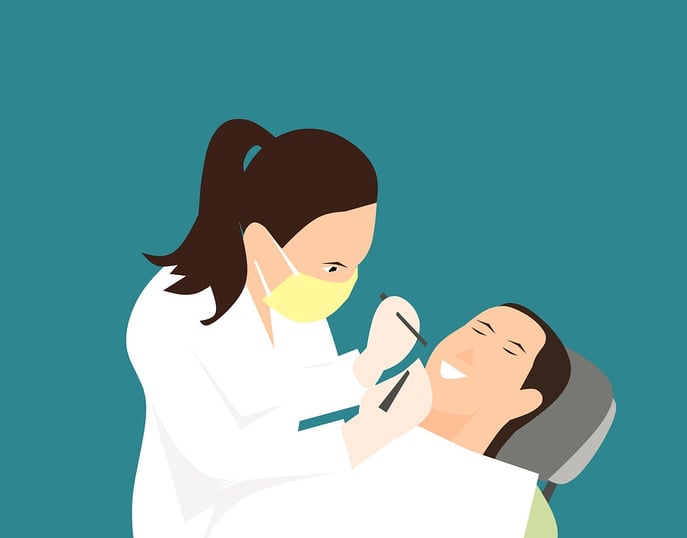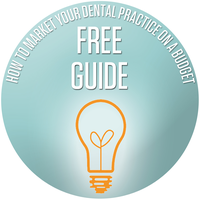
Quality care is clearly important. At the same time, communicating with your patients is key to provide the best experience and keep them coming back.
Many people dread going to the dentist out of fear. As a result, they do not seek the care they need. Fear of the dentist typically comes from the unknown, when patients do not know what to expect, are not properly informed, or do not feel heard.
Key takeaways:
- Building a strong patient-dentist relationship is important.
- Through clear communication you can increase patient retention and referrals.
- Dentists and staff can put patients at ease by greeting them and having a short conversation before procedures.
- Having a good chairside manner leads to long-lasting patient relationships.
While physical care from a dentist is clearly the most important aspect of a visit, your chairside manner and communication skills are essential to put patients at ease. This will lead to higher patient satisfaction. So, it is time to delve into how to communicate effectively with dental patients.
Benefits of connecting with patients
You have the power to make genuine connections with your patients. This can be done by listening to their needs and keeping them informed of what you are doing while they are in the chair. You will see improved outcomes with benefits for you, your staff, and your patients:
- Patient retention: Patients can be extremely loyal to providers who put them at ease. A warm communication style and an efficient approach to care can go far. By creating these connections with your patients, you can help ensure return visitors to your practice and avoid patient turnover.
- Increased referrals: Not only do positive experiences keep your patients coming back. But they also result in current patients advocating for your business, which will help your practice grow and expand to new patients.
- Fewer complaints: Each patient is different in their wishes and expectations. And there is always the risk of patient complaints. No one is perfect, and issues are sometimes unavoidable. However, most mistakes and conflicts can be resolved through proper communication. In fact, Four out of every five complaint calls can be resolved with better communication.
- Lower risk of patient injury or accidents: When dentists and staff are not communicating with patients the chance of an accident goes up. By implementing effective communication strategies, you can help lower these risks and create a safer environment for all.
- Improved efficiency: We are all human and it is easy for dentists to get used to the flow of a visit. It may not feel important to walk your patients through each step of their appointment. However, the result can be an uneasy patient who is unaware of what to expect and how you will be treating them. Patients may feel increased levels of discomfort, which can slow your work down. So, take the time to communicate with your patient throughout the procedure and talk about how it might feel. By being in tune with your patient, you can better guide the experience and work more efficiently.
Once you prioritize effective communication with your patients, you will begin to experience these benefits and more. It will create a better outcome for everyone.
Tips for putting patients at ease during their appointments
We have discussed the benefits of proper communication. But at this point, you may be asking yourself, how can I implement this at my practice? Effective communication with your patients can be extremely easy, just by introducing some simple changes to your routine. Here are a few tips to help you get started:
- Make sure patients are greeted at the door with a smile. This may seem simple, but it can make all the difference for a patient who is feeling anxious and wants to be put at ease.
- Promote a calming experience from the lobby to the exam room with soft music, candles or room scents, and even art and décor that promotes a feeling of relaxation.
- As the dentist, make sure to greet patients before a procedure and have a short conversation. This will allow your patients to distract themselves from any anxious feelings, and it can put them at ease before you begin.
- Explain what you are doing at each step so your patients know what to expect and how it might feel.
- Check in with patients throughout a procedure to ensure they are feeling as comfortable as possible. This will let them know you are in tune with their needs.
- It is easy for patients to feel trapped when in the chair. So, offer time for breaks during long procedures where possible to help your patients feel more comfortable and in control.
How to build lasting patient relationships
These simple practices can help you improve your chairside manner and form lasting relationships with your patients. They can not only make your job easier but can also be beneficial for your business.
Here are some additional tips to ensure your patients feel important and valued:
- Remember each patient’s name
- Send emails and texts from the practice for birthdays, appointment reminders and other events
- Hang a ‘welcome sign’ in the lobby
- Offer incentives like free dental product samples or branded swag
Small gestures like these can make a world of difference in positively affecting the patient experience at your office.



